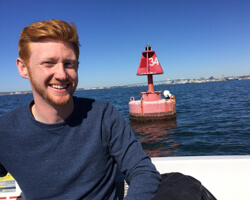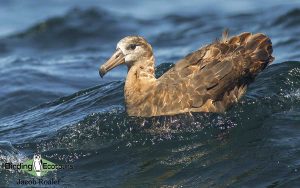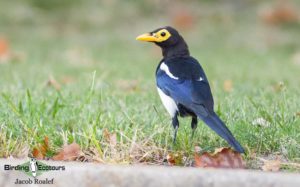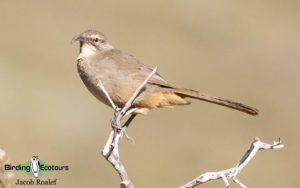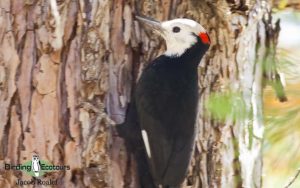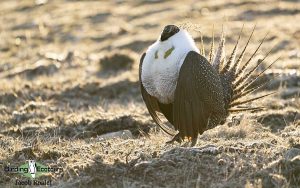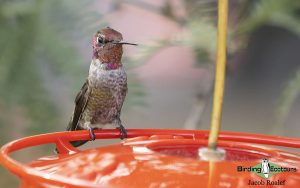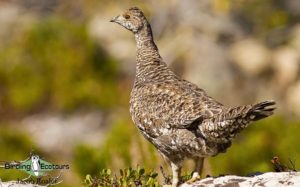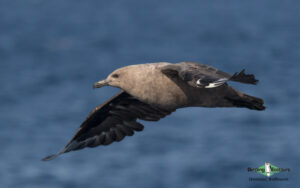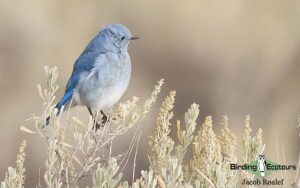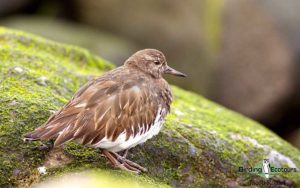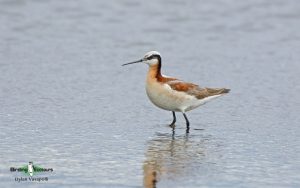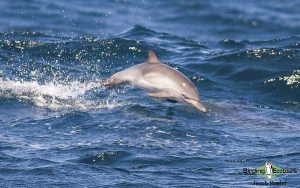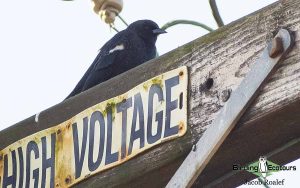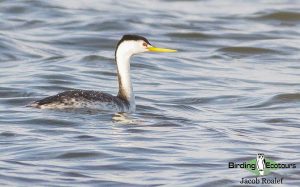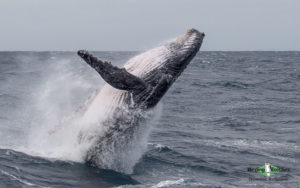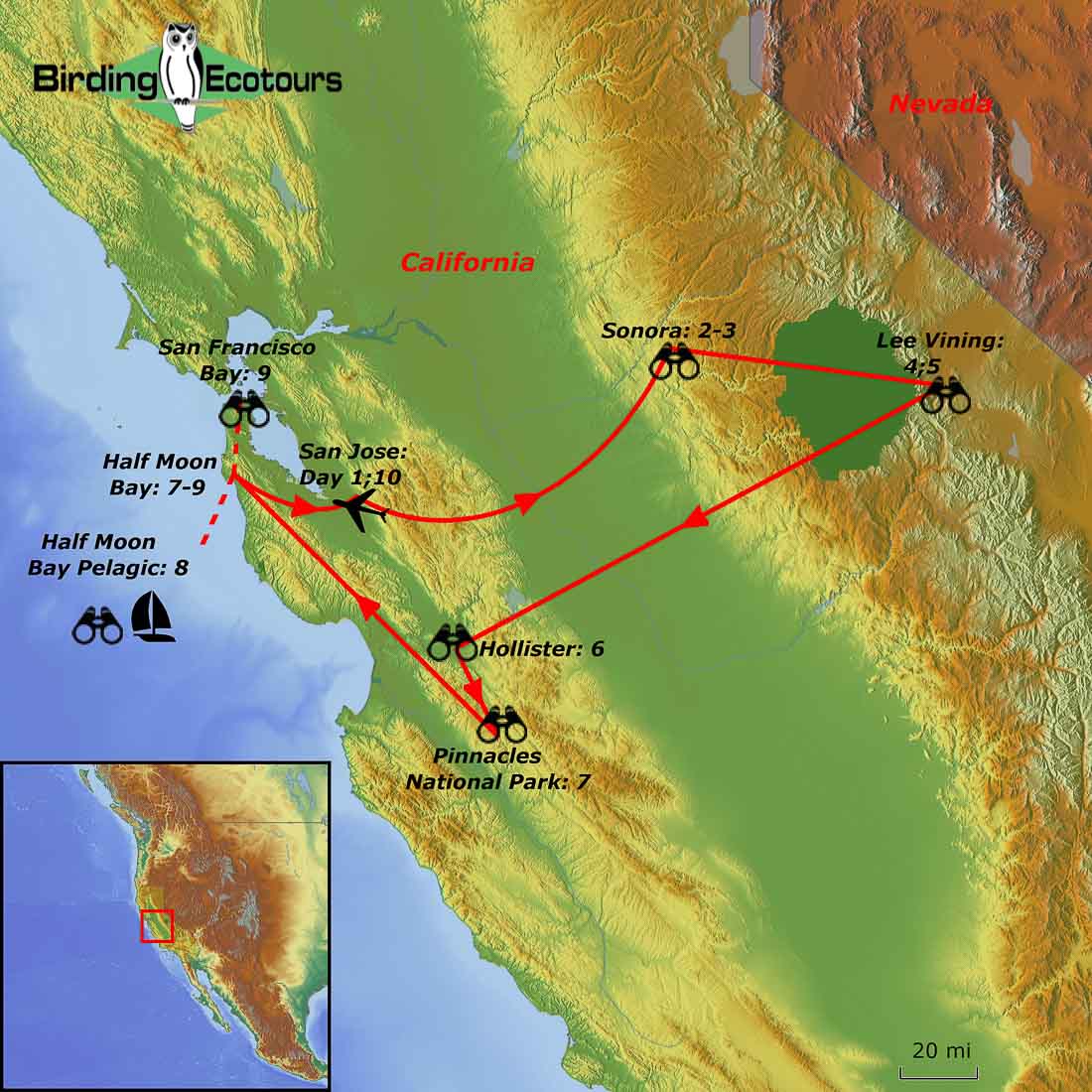Birding Tour USA: Northern California – Mountains, Ocean and Desert
Go to: USA Birding Tours | Birding Tours in North America | Tours by destination - List
Northern California: Mountains, Ocean and Desert
September 2025/2026
The mention of California usually conjures up visions of scenic mountain vistas, the blue Pacific, and sunbaked deserts of the south. The birds are no less spectacular, with everything from Black-footed Albatross to Lawrence’s Goldfinch to California Condor possible. During this ten-day birdwatching tour, we will search for many of California’s resident species as well as several migrants. We will visit a vast array of habitats, including marshlands and tidal wetlands, the scenic Sierra Nevada range, rich with montane birds (including seven species of woodpeckers), and the sage-filled lands east of the Sierras that harbor (Greater) Sage Grouse and Mountain Bluebird. Not to mention fantastic birding sites like Pinnacles National Park, the Diablo Range, Mono Lake and the open waters of the Pacific Ocean. The list of scenic views and target bird species goes on and on and on.
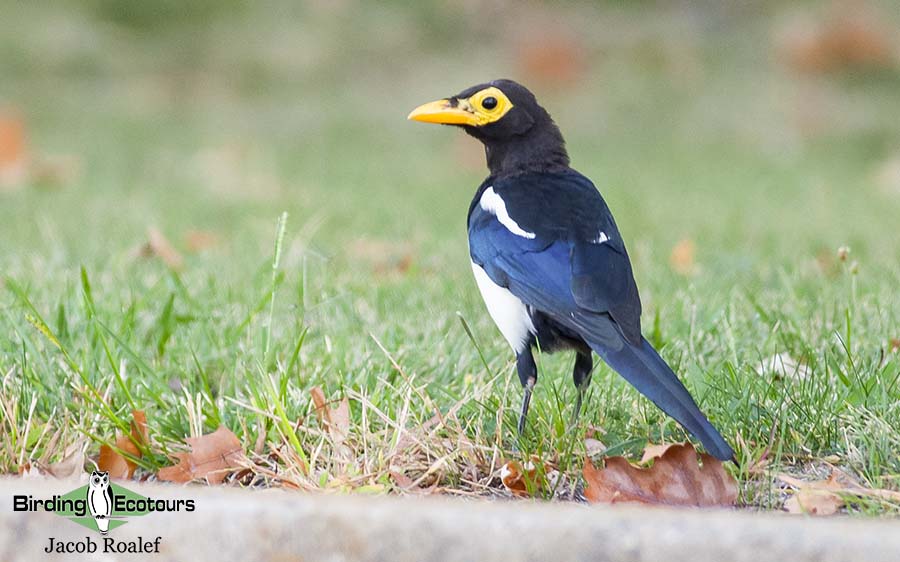 The bold Yellow-billed Magpie is a top target and endemic to California.
The bold Yellow-billed Magpie is a top target and endemic to California.
Mixed-oak woodlands will be birded intensely, as they contain several species of owls and passerines that are not easily found in other habitats. A pelagic trip is included for a chance at seabirds such as Long-tailed Jaeger, South Polar Skua, Buller’s Shearwater, and Ashy Storm Petrel. Of course, there is an excellent chance to observe whales as well, including Humpback Whale and the magnificent Blue Whale!
If you wish to enjoy a full comprehensive tour of California, please check out our set departure birding tour to southern California. This trip includes stops in various habitats for California Gnatcatcher, California Thrasher, California Quail and many more. Please see the separate itinerary for more information. This tour can be combined with our Yellowstone and Tetons birding and mammals trip.
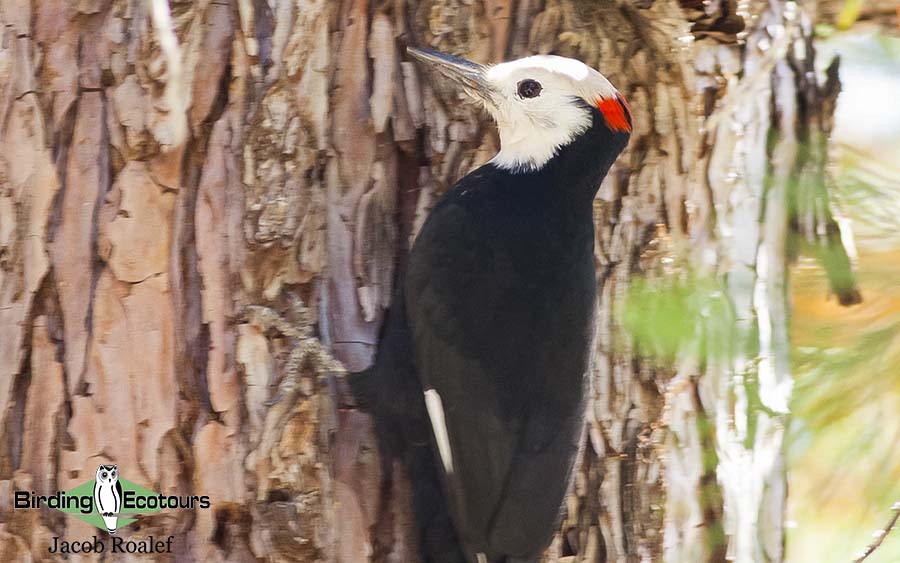
Itinerary (10 days/9 nights)
Day 1. Arrival in San Jose
The tour begins with your arrival at San Jose International Airport, after which we will then gather in the hotel lobby around 6pm before heading out to our first dinner to discuss the exciting possibilities of the trip. Depending on arrival times, we may be able to get in some birding around the San Francisco Bay before dinner and get our first taste of Pacific Ocean species such as Pelagic Cormorant, Western Grebe, California Gull, Black Oystercatcher and more.
Overnight: San Jose
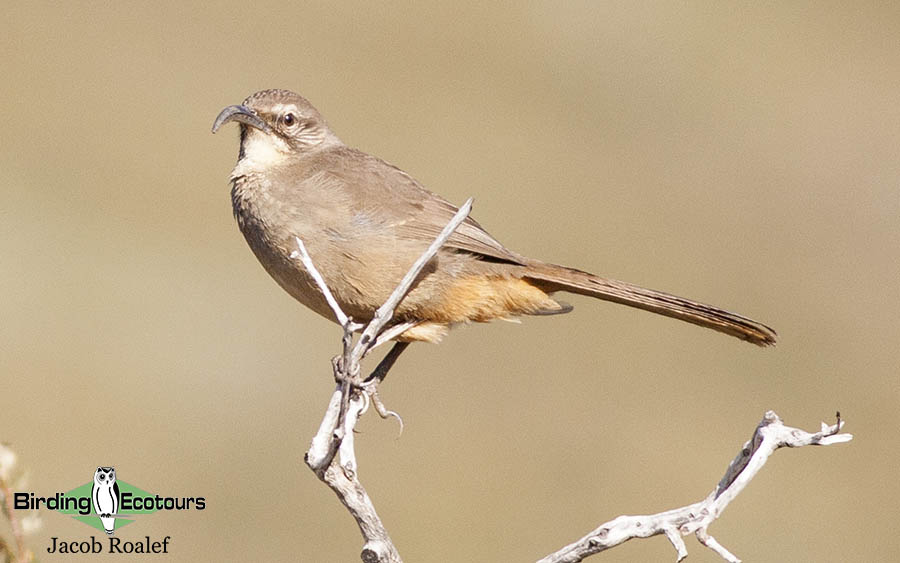
Day 2. Central Valley birding through the Diablo Range
We will head out early this morning and begin our journey eastward towards the Sierra Nevada. First, however, we will travel through the Central Valley and Diablo Range with several key species and birding spots. The amazing endemic Yellow-billed Magpie is typically restricted to the Central Valley, a flat, hot, scrubby region. During our search for the magpie, we will also be on the lookout for other nice species including California Thrasher, Bell’s Sparrow, Swainson’s Hawk, Golden Eagle, and California Scrub Jay. A few more stops for the day will have us searching for Lawrence’s Goldfinch and Lewis’s Woodpecker among others. Eventually we will make it to Sonora and the western slopes of the Sierra Nevada for the night.
Overnight: Sonora
Day 3. Sierra Nevada birding
Today we will explore the western slopes of the Sierra Nevada and the conifers that dominate here. Our first stop will be Calaveras Big Trees State Park with its stands of Giant Sequoias hosting hopefully many great species including White-headed Woodpecker, Varied Thrush, Pacific Wren, and Red-breasted and Williamson’s Sapsuckers. In the afternoon we will climb to higher elevations to target Mountain Quail along with other species such as Mountain Chickadee, Townsend’s Solitaire, and Green-tailed Towhee before making our way back to Sonora for the night.
Overnight: Sonora
Day 4. Eastern Sierras to Lee Vining
This morning we begin our journey across the Sierras, winding our way through this beautiful range. Our plan is to do mostly road-side birding and a stop at Pinecrest Lake where we hope to find great species such as Cassin’s Vireo, Hermit Warbler, plus additional chances at Mountain Quail, if needed. Eventually we will make it to the crest at Sonora Pass and continue our birding, targeting Clark’s Nutcracker, Red Crossbill, and Cassin’s Finch, among others. From here we will begin our downward path in the eastern Sierras towards the Mono Lake Basin. We will get our first taste of birding here in the evening and hope to spot Eared Grebe, Woodhouse’s Scrub Jay, and Wilson’s Phalarope, before turning in for the night in Lee Vining.
Overnight: Lee Vining
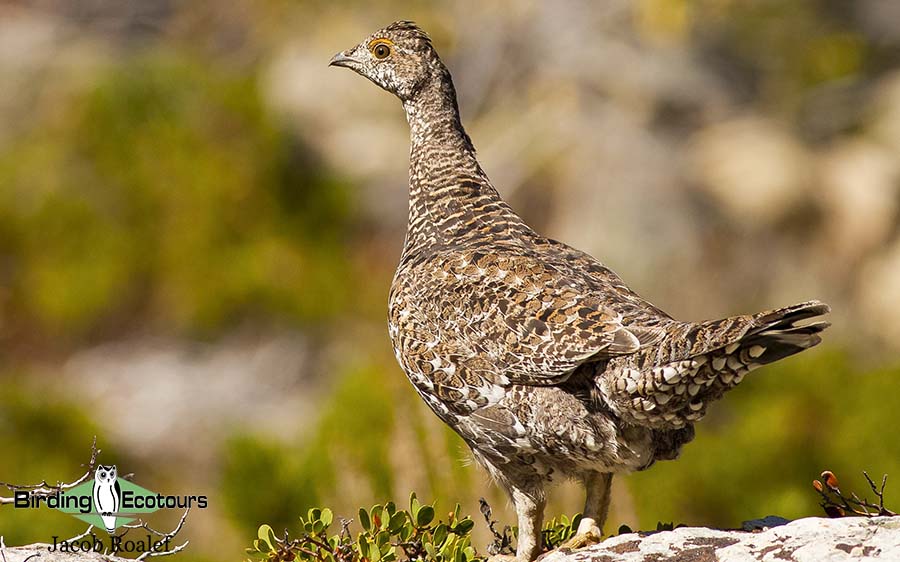
Day 5. Mono Lake Basin
Today will be spent birding the sage and woodlands east of the Sierras, Mono Lake, and the abandoned town of Bodie. An early morning visit to Mono Lake should hopefully produce Prairie Falcon, Sage Thrasher, American Grey Flycatcher, Sagebrush and Brewer’s Sparrows. Additionally, Pinyon Jay, Black-billed Magpie, and Woodhouse’s Scrub Jay can be found roaming these areas. Eventually we will make it to the deserted mining town of Bodie, one of the last remaining California strongholds of (Greater) Sage Grouse. The landscapes, habitats, and scenery of the day will take us back in time to the days of the wild west.
Overnight: Lee Vining
Day 6. Travel day back towards the coast
Today will mostly be spent as a travel day getting us back through the mountains and closer to the coast. Of course, some birding will be done along the way, and we can use it as an opportunity to target any potential species we may be missing at this point such as Sooty Grouse, Black-backed Woodpecker or Pinyon Jay. We will spend whatever time we have trying to track down these loose ends before eventually ending up in Hollister for the evening.
Overnight: Hollister
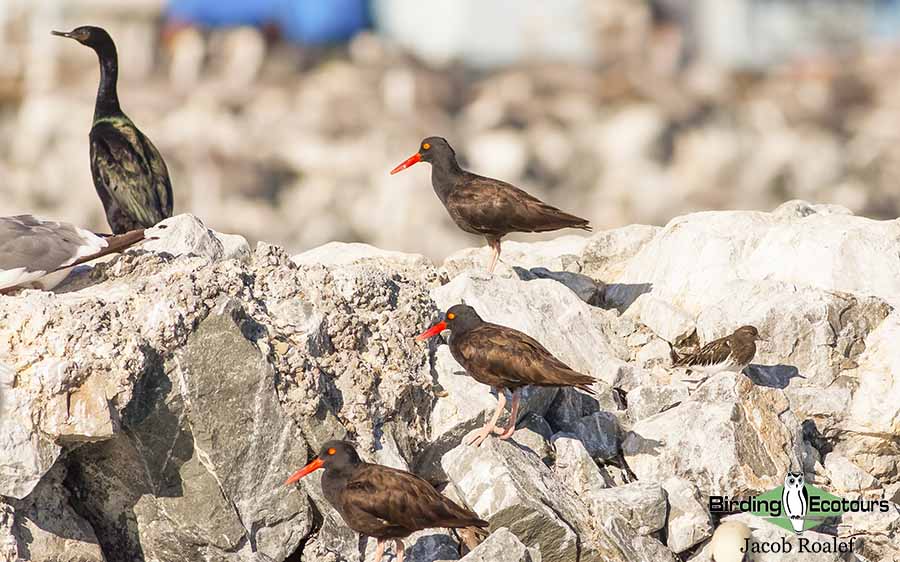
Day 7. Condors to the coast
This morning we will head off towards Pinnacles National Park to scope out a few cliff sides for one of the world’s rarest birds, California Condor. With a wild population estimated at only 440 individuals (up from as few as 13), this breathtaking monster is the poster child for conservation success. After a hopefully successful morning with the condors, we will continue birding some canyons in the region hoping for Bell’s Sparrow, Lawrence’s Goldfinch, Nuttall’s Woodpecker, and Oak Titmouse. From here, we head to the coastal marshes with the IUCN endangered Tricolored Blackbird as the top target. Of course, these marshes host more than just blackbirds and should be teeming with waterbirds such as Cinnamon Teal, American Avocet, Marbled Godwit, Western Sandpiper, Elegant Tern, and Brown Pelican. We will continue our journey up the coast until we reach our final destination, Half Moon Bay.
Overnight: Half Moon Bay
Day 8. Pelagic boat trip from Half Moon Bay
Today will be the first of our two potential pelagic trips from Half Moon Bay. Huge upwellings produced by a massive submarine canyon twice the size of the Grand Canyon, allow for rich and diverse wildlife viewing within a short distance of land. Potential species include Buller’s, Pink-footed, Sooty, and Black-vented Shearwaters, Ashy and Black Storm Petrels, Pomarine, Parasitic, and Long-tailed Jaegers, South Polar Skua, Arctic Tern, and Cassin’s and Rhinoceros Auklets. We will hope for a rarity such as a stray Fork-tailed Storm Petrel or a roaming Laysan Albatross. We have a good chance of finding Blue and Humpback Whales along with four additional cetacean species. Days out on the water are long and draining typically so we will have dinner and return to the hotel after getting back to land.
Overnight: Half Moon Bay
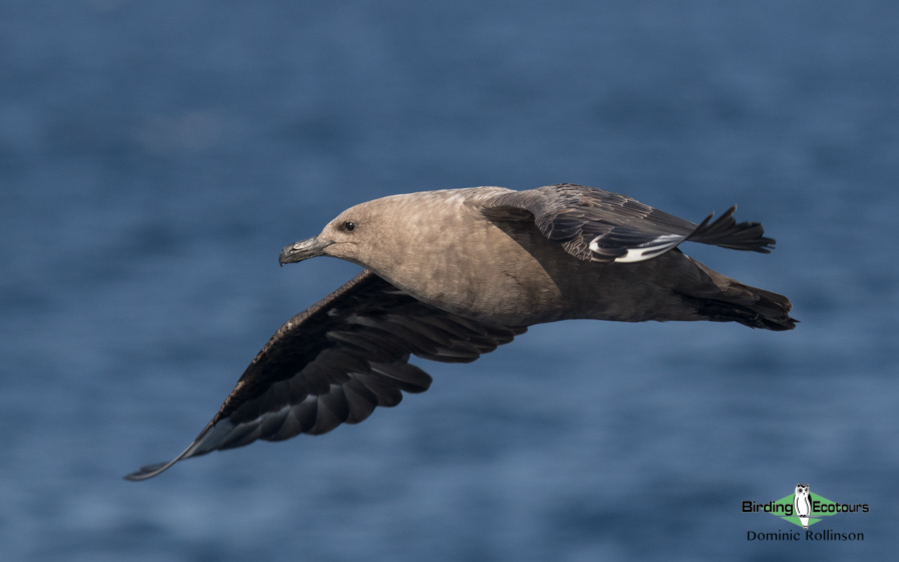
Day 9. San Francisco Bay or pelagic backup
Today will serve as a backup day for our pelagic trip in case the trip was cancelled due to weather on the previous day. In this case, we will swap the plan of day 8 with day 9. If all goes well with the pelagic, we will spend today exploring San Francisco Bay and down the coast getting into various habitats. Species today could include Wrentit, Surfbird, Ridgway’s Rail, and Pacific-slope Flycatcher. We will also let our remaining target species help us decide on the plans for the day. At the end of the day we will return to Half Moon Bay for our final dinner together.
Overnight: Half Moon Bay
Day 10. Tour Conclusion and Departure
This morning the tour concludes with your transfer back to the San Jose Airport (approx. 50 min. drive) after what was surely an amazing expedition of northern California. If you like a more comprehensive experience of this avian-rich state, you could also join our southern California set departure tour, where we find further California specials.
Please note that the itinerary cannot be guaranteed as it is only a rough guide and can be changed (usually slightly) due to factors such as availability of accommodation, updated information on the state of accommodation, roads, or birding sites, the discretion of the guides. In addition, we sometimes have to use a different international guide from the one advertised due to tour scheduling.
Download Itinerary